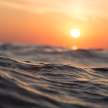places on earth you should never visit
From Dangerous Destinations to Deadly Environments

Death Road
One place to avoid during your travels is Yungas Road in Bolivia, also known as Death Road. This treacherous track winds along a sheer cliff-face, reaching heights of 15,260 feet above sea level. The road is narrow, often only 10 feet wide, without guardrails to protect from a deadly 2,000-foot drop. Dust clouds and frequent rainstorms from nearby rainforests make visibility challenging. Despite its dangers, many daredevils have braved the road, leading to numerous fatalities. Though a safer alternative road exists since 2006, some still venture onto Death Road, a journey with no turning back.
Naica Crystal Cave
Another perilous destination is the Naica Crystal Cave in Mexico. This underground cavern features massive selenite crystals, formed over thousands of years. However, the cave sits above an underground magma chamber, resulting in extreme temperatures and humidity. The air is so saturated with moisture that it's difficult to survive more than 10 minutes without specialized cooling equipment. Even with these precautions, scientists can only tolerate the conditions for an hour.
Snake Island
Off the coast of Brazil lies Snake Island, officially known as Ilha da Queimada Grande. This island is home to around 4,000 Golden Lancehead pit vipers, one of the deadliest snakes in Latin America. The venom from these snakes can cause severe tissue damage and death within an hour. Due to its dangerous inhabitants, the Brazilian Navy has banned visitors, except for essential scientific research.
Death Valley
Death Valley in California is one of the hottest places on Earth. Temperatures can soar up to 134°F, creating life-threatening conditions. The valley is also home to dangerous wildlife, including rattlesnakes, scorpions, and mountain lions. In 2017, a tourist suffered third-degree burns from walking barefoot on the scorching ground. Despite these risks, some visitors continue to challenge the valley's extreme conditions.
Oymyakon
On the opposite end of the temperature spectrum is Oymyakon, Russia, the coldest inhabited place on Earth. With average winter lows of -58°F and temperatures dropping as low as -90°F, survival is a daily challenge. Frozen ground limits agriculture, and basic tasks become dangerous due to the extreme cold. Residents must wear expensive fur coats to venture outside, highlighting the high cost of survival in this frigid environment.
Horrible Holes
The Mariana Trench, located in the South Pacific Ocean, is the deepest point on Earth. With depths reaching seven miles and pressures 1,000 times greater than at sea level, it's an inhospitable environment. Only a handful of people have ever visited its depths, leaving much unknown about its mysterious inhabitants. In addition to natural deep-sea trenches, man-made pits like the Mir mine in Russia pose their own set of dangers, including flooding and powerful vortexes that can suck in aircraft.
The Devil's Pool
If you're an adrenaline junkie willing to risk it all for the perfect holiday photo, the Devil's Pool at the edge of Victoria Falls in Zambia might be your next destination. This natural pool sits just a narrow lip of rock away from a 354-foot drop into the raging waters below. While it's relatively safe between mid-August and December, the wet season from January to July brings rising water levels and strong currents that could sweep you over the edge. Additionally, the pool is home to crocodiles and hippos, adding another layer of danger to this high-risk photo opportunity.
Danakil Depression
The Danakil Depression in North-West Ethiopia is a landscape unlike any other, resembling a radioactive wasteland with its neon yellow craters and deep green waters. However, this stunning volcanic plain poses numerous threats to visitors. Located at the junction of three tectonic plates, the area experiences regular earthquakes and fissures that emit poisonous sulfur and chlorine gases. The tectonic activity also creates scalding hot springs with temperatures as high as 226°F. Furthermore, the region houses two active volcanoes, one of which, Erta Ale, has a deadly lava lake that occasionally overflows.
Islands of Doom
Runit Island in the Marshall Islands, between Hawaii and the Philippines, is home to a haunting sight: a concrete dome filled with radioactive debris. From 1946 to 1958, the US military conducted 67 nuclear bomb tests in the region, leaving behind a legacy of environmental devastation. Today, the area is still highly radioactive, with some parts even surpassing Chernobyl's radiation levels. Meanwhile, Vozrozhdeniya Island near the Aral Sea was used by the Soviet Union for testing biological weapons, including anthrax and smallpox. Decades later, the decaying facilities have led to leaks of deadly pathogens into the environment.
The Elephant's Foot
The Elephant's Foot, located at the heart of the Chernobyl disaster site in Ukraine, is a deadly reminder of the nuclear catastrophe that occurred in 1986. Formed from a mix of nuclear fuel and melted metal, this lava-like material emits high levels of radiation. While the Elephant's Foot is now housed in a protective steel structure, exposure to its radiation would be fatal within minutes.
About the Creator
Santosh Chaudhary
Fascinated by nature and science, I explore our world's mysteries. Intrigued by crime and mystery, I delve into human complexities. Blending these interests, I seek to uncover the connections between them."






Comments
There are no comments for this story
Be the first to respond and start the conversation.